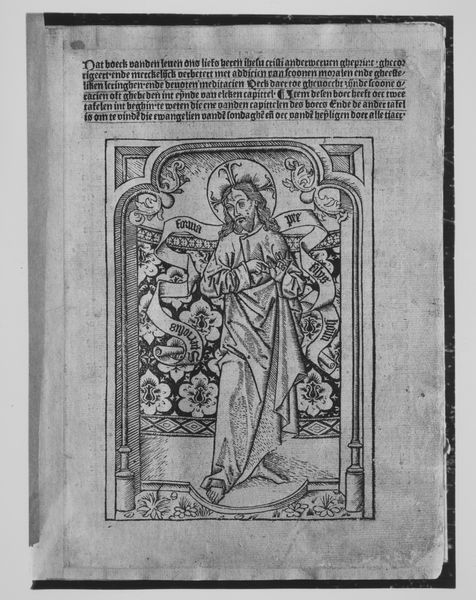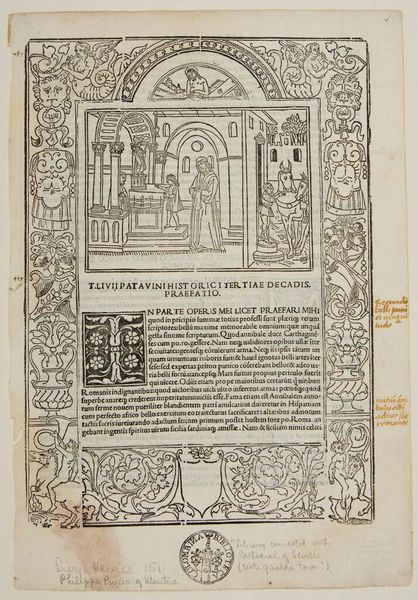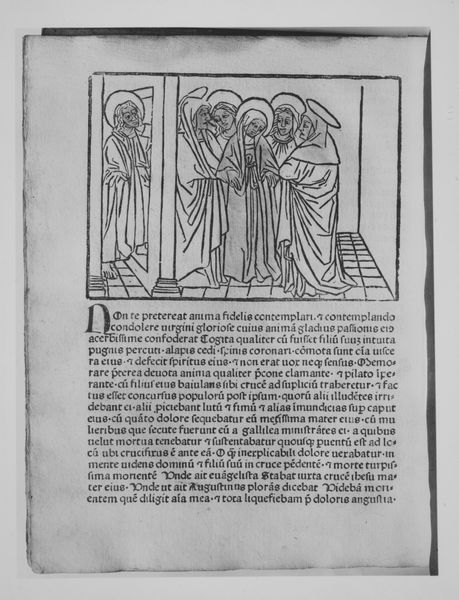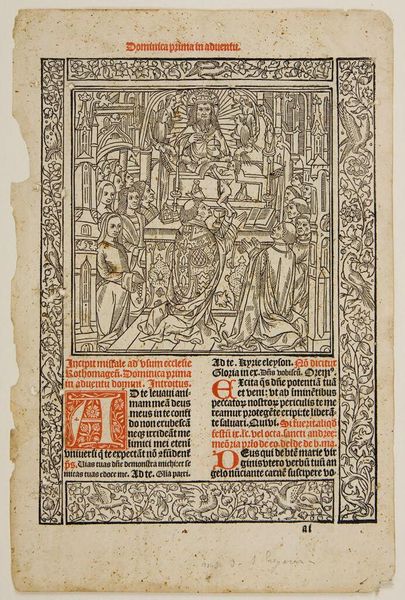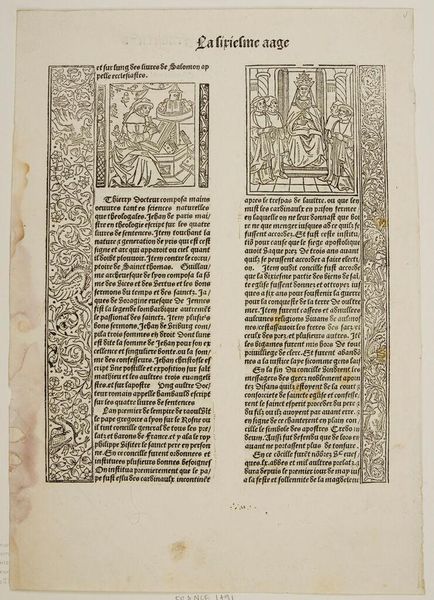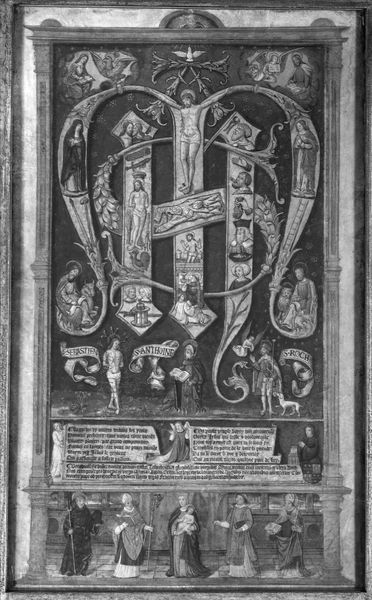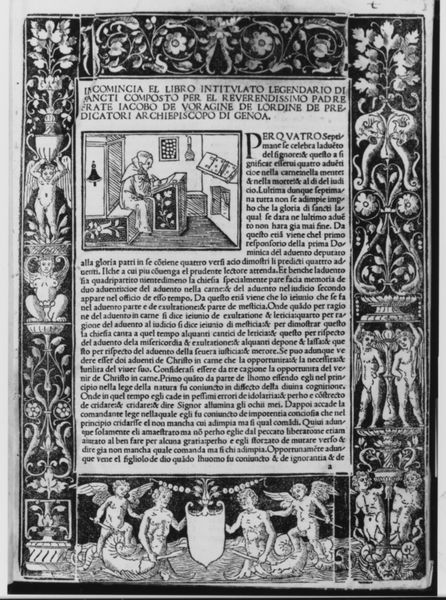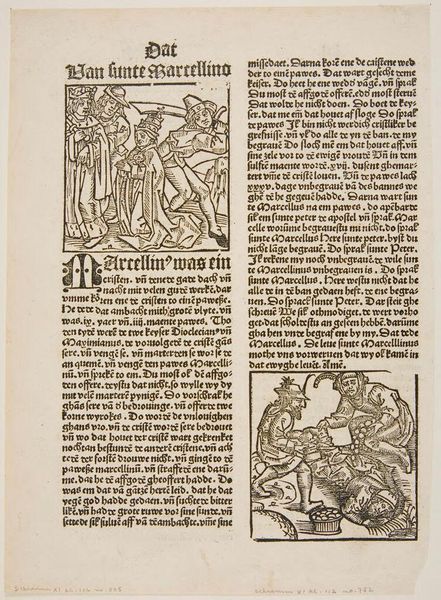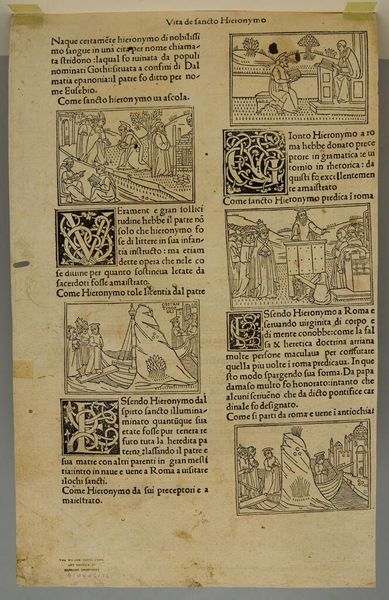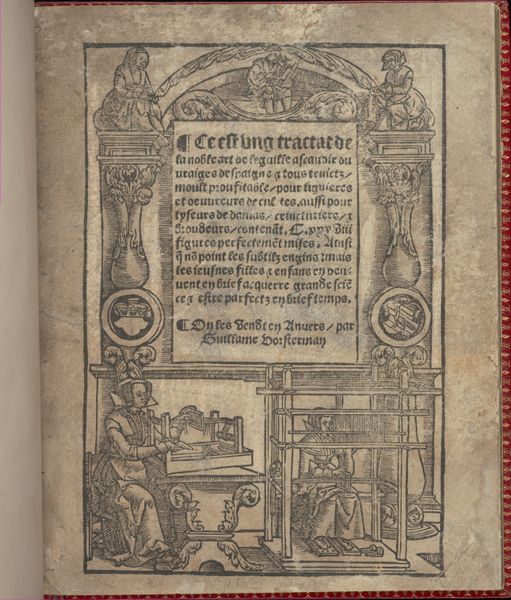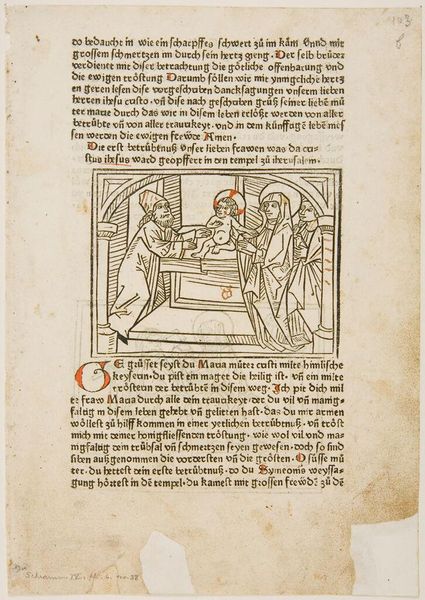
drawing, print, woodcut
#
tree
#
drawing
#
table
#
medieval
# print
#
book
#
detailed texture
#
woodcut effect
#
hand drawn
#
woodcut
#
men
#
pen work
#
genre-painting
#
history-painting
#
northern-renaissance
Dimensions: 10 3/16 × 7 1/2 × 1 1/16 in. (25.9 × 19.1 × 2.7 cm)
Copyright: Public Domain
Curator: At the Metropolitan Museum, we see a remarkable woodcut titled *Vitae Patrum (Lives of the Desert Fathers)* created in 1511. The artwork's detailed textures, achieved through woodcut, capture a group of figures at what seems to be an outdoor meal. Editor: My first impression is one of contemplation despite the figures seated at a table. The dense line work and stark contrasts evoke a sense of rustic piety, reminiscent of late medieval sensibilities, doesn't it? The detail given to each figure, with the text layering into their very being... It gives it an almost solemn feel. Curator: Indeed. This work reflects the rising popularity of genre and history painting, focusing on early Christian hermits. The visual impact is inextricably tied to the book it introduces, "Vitae Patrum", which served as a guide to those seeking spiritual and hermitical inspiration during a period of massive religious and cultural transition. Editor: Absolutely. I’m immediately drawn to the individual details laden with symbolic weight. The table, for example, around which they're gathered could symbolize the Eucharist or, more generally, communion. Also the figures themselves -- who do you imagine they might represent, what historical personae might we read into their dress and countenance? Curator: Saint Jerome appears to be referenced, if not portrayed explicitly. We cannot assume we can put any single one figure with that label. The context here provides something more important: it situates them into a complex landscape of monastic tradition as a burgeoning literary culture, and of print, expanded spiritual life in society during the Renaissance. These men's lives, their actions, now recorded, shared. Editor: Agreed, and that printed element— the fact this narrative now belongs to anyone with the printed page-- reinforces the narrative's power. This image now gives those spiritual values form, making their quest so visually tangible and personally attainable, one is more inspired to carry that legacy. Curator: It’s a powerful example of how art could translate religious doctrine into more approachable human experiences through new channels of engagement. Editor: Ultimately, I’m left pondering how symbols adapt and retain their power across media, allowing people of any period to see in themselves reflections of a continuous, if reinterpreted, legacy of devotion and introspection.
Comments
No comments
Be the first to comment and join the conversation on the ultimate creative platform.
